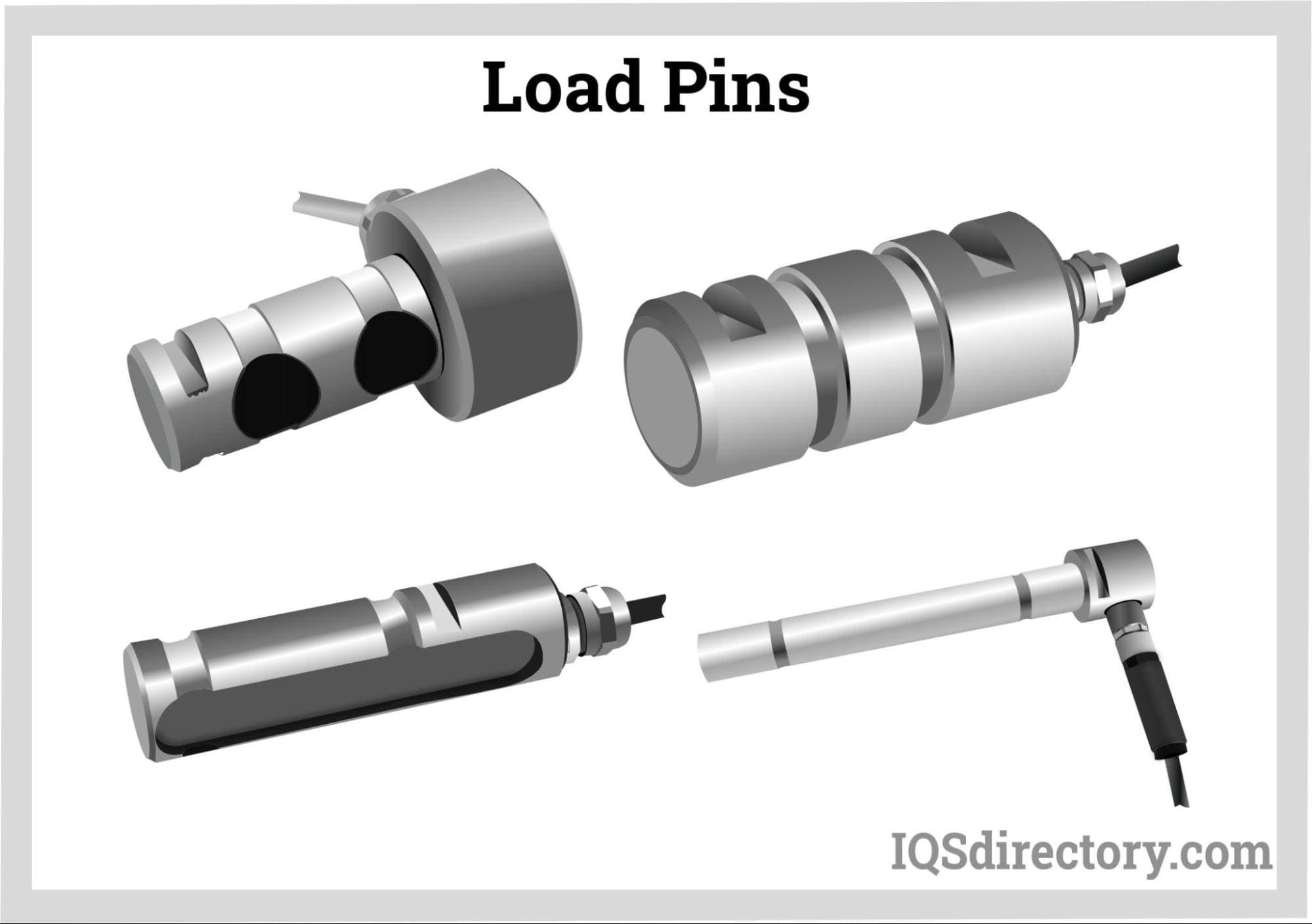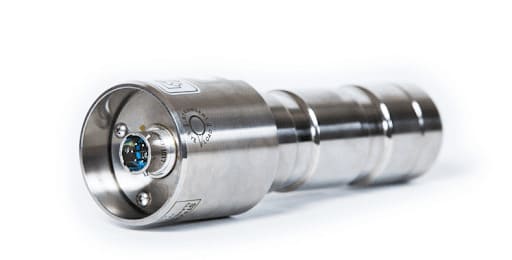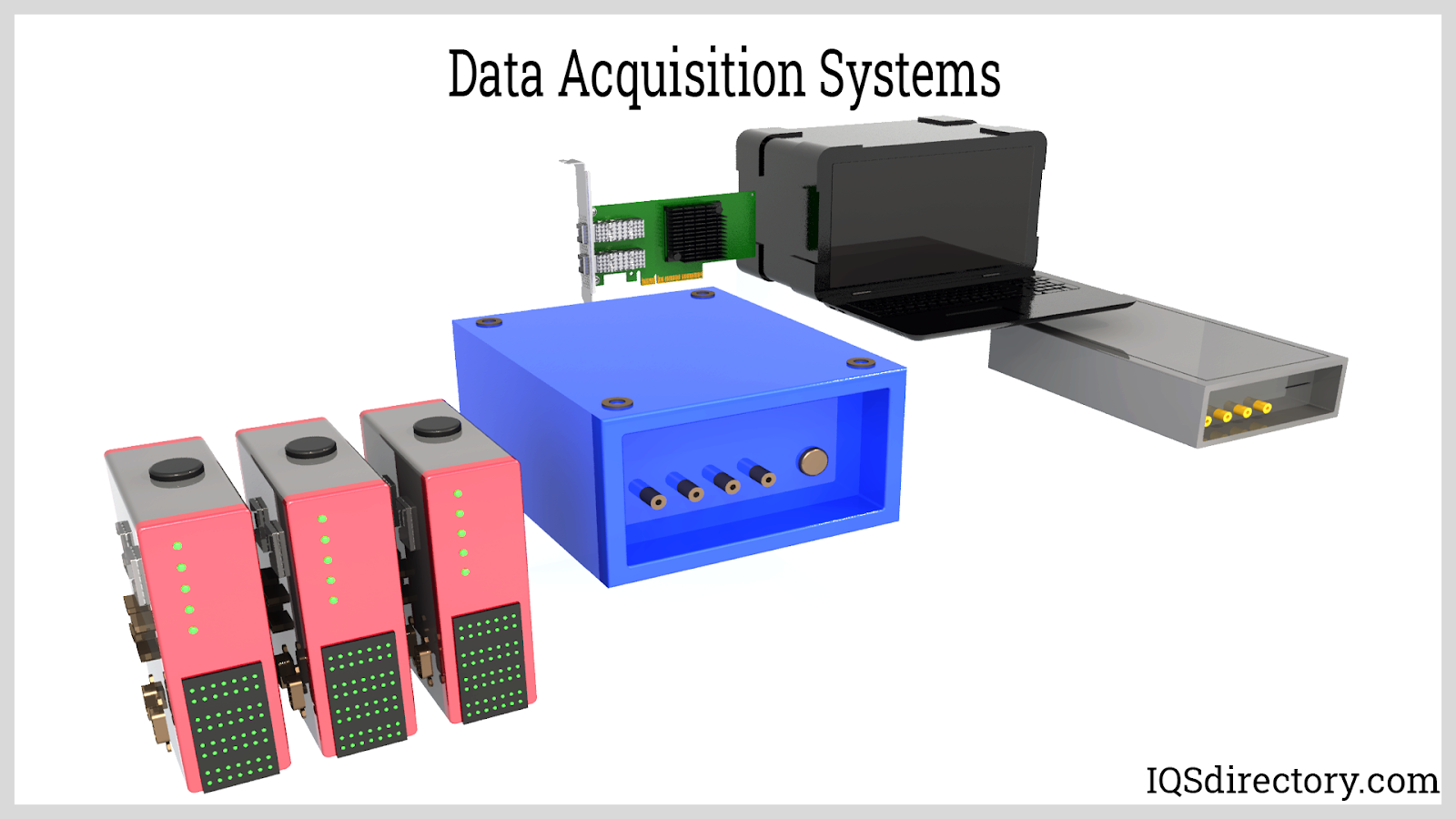More Load Cell Manufacturers
For instance, sensors and gauges are components of load cells. However, sensors also function as a type of transducer, which can lead to confusion. While it’s correct to categorize both load cells and sensors as “transducers,” referring to sensors and gauges as “load cells” is less accurate. Despite this, such terminology is often encountered in practice. If you find yourself uncertain, don’t hesitate to seek clarification.
This technology finds widespread application in mechanical and industrial testing, continuous system load monitoring, and as integral components in devices such as industrial scales across various sectors of manufacturing, processing, and testing industries.
Load cells, pressure sensors, and gauges find diverse applications across various industries. For instance, in warehouses, load cells help determine the precise weight of loaded pallets. In food processing, they ensure accurate ingredient measurements for precise packaging. These technologies are also crucial in calibration systems, fatigue testing in R&D labs, push-pull testing, flow measurement, bridge beam tension strength testing, and for railcar and truck weighing scales.
The History of Load Cells
Modern load cells operate by utilizing strain gauges arranged in a Wheatstone configuration. This technology owes its development to two key innovations: the Wheatstone bridge equation and the strain gauge itself. Sir Charles Wheatstone refined and popularized the Wheatstone bridge equation in 1843, establishing the principle of differential measurement. However, this equation’s practical utility was limited until the invention of the strain gauge. Prior to its development, large loads and industrial items were typically weighed using mechanical lever scales.
In the 1940s, the strain gauge emerged, marking a significant advancement. Initially, researchers introduced the first bonded resistance wire strain gauge. The combination of this innovation with the Wheatstone bridge equation led to the creation of load cells. Despite having the necessary components, engineers faced challenges in scaling production due to limited electronic technology and funding. However, as technology advanced and feasibility improved, the adoption of load cells skyrocketed, fueling ongoing growth in the industry to the present day.
Design
Production Process
Load cells are crafted through principles involving mass measurement under fluid pressure, elasticity, magnetic effects, piezoelectricity, and zero-gravity conditions. They consist of two primary components: the sensing element and the circuit, typically accompanied by connecting cables.
The sensing element typically comprises a strain gauge, a compact device that detects strain, weight, or force by converting internal deformation into electrical signals. Occasionally, the load cell may employ a piezoelectric sensor instead, utilizing piezoelectric crystals to measure strain, movement, weight, and vibrations. This category includes pressure and force transducers, which, like load cells, gauge applied force, pressure, and strain in contexts such as gas and liquid pressures, and altitude. The circuit links these sensors or gauges to various points within the load cell, while cables, if employed, connect transducers to instrumentation.
Material Design
Load cells can be crafted from diverse metallic materials, including tool steel, alloy steel, stainless steel, and aluminum, tailored to the specific requirements of the load cell. Manufacturers select materials based on the intended use, prioritizing characteristics such as lightness, strength, electrical and thermal conductivity, aesthetic appeal, ease of machining, corrosion resistance, resilience at very low temperatures, and malleability.
Design Considerations and Customization
In crafting a load cell, manufacturers must navigate a myriad of factors. Initially, they delve into the cell’s potential capacity by analyzing the dynamics of the system, such as frequency response, and the highest values of force and extraneous loads, while also evaluating the impact of integrating the transducer within the force pathway. Mounting considerations include whether the load cell will directly or indirectly intercept the primary load, as well as the environmental conditions—like exposure to water or corrosive materials—and the spatial constraints where the load cell operates. These deliberations are crucial to ensure the safety and efficiency of industries using these devices. By meticulously tailoring the load cell’s size, shape, and material, manufacturers aim to craft a unit perfectly suited to its intended function.
Features
Load cells function through detectors like strain gauges that gauge various forces and pressures. These devices gather data and forward it to recording or digital data processing systems. These systems can be analog, relying on voltage variations, or digital. Digital load cells are generally favored for their speed, precision, and superior resolution. Should these cells detect any discrepancies in the monitored systems, they trigger alarms or halt operations entirely until the problem is identified and resolved.
Types
Tension Load Cell
Tension load cells measure the force of pulling apart along a single axis, capturing this stress as a positive force. Commonly, these devices employ strain gauges to accurately gauge tension.
Compression Load Cell
A compression load cell gauges the pushing force applied in a straight line along a single axis, essentially measuring a negative force. Similar to their tension counterparts, these devices often employ strain gauges. Suited for scenarios where space is at a premium, compression load cells excel due to their compact nature. Moreover, they are prized for their superior long-term stability.
Strain Gauge Load Cell
The term “strain gauge load cell” encompasses a variety of load cells that employ strain gauges as their primary sensing mechanism. These devices typically handle loads ranging from 5 N to over 50 N and are paired with high-resolution digital indicators to ensure precise measurements. Adhering to optimal force transfer standards, strain gauge load cells are renowned for their superior performance, making them the most popular choice in load cell technology.
Beam Load Cell
A beam load cell, often referred to as a bending load cell, is commonly employed in industrial weighing tasks. Its compact, low-profile design makes it perfectly suited for fitting into tight spaces.
S-Beam Load Cell
S-beam load cells, part of the broader beam load cell group, derive their name from their ability to measure “shear” forces, which split an object along a plane faced with contrasting stresses. Renowned for their excellent rejection of lateral loads, these cells yield an output when compressed or stressed. Common uses for S-beam load cells span from onboard vehicle weighing to measuring the weight in silos, tanks, and industrial floor scales.
Platform Load Cell
Platform load cells, often referred to as single point load cells, are engineered to deliver precise measurements regardless of where the load is placed on the platform. Utilizing just one active load cell, they are primarily employed in standalone device applications, such as supermarket scales.
Multi-Load Cell Scale
Multi-load cell scales use a method akin to platform load cells, capturing readings from multiple points on the scale to deliver highly precise measurements.
Interface Load Cell
Interface load cells are vital components in larger systems, continuously monitoring torque and force.
Hydraulic Load Cell
Hydraulic load cells gauge the alterations in pressure within their fluid filling, translating these changes into measurements of weight. These devices are commonly employed to monitor the pressure variations of fluids within containers like bins, tanks, and hoppers.
Miniature Load Cell
Mini load cells are specifically crafted for smaller applications where they provide accurate measurements. These devices are akin to low-capacity transducers, miniature in form, capable of assessing weights ranging from .9 ounces to 150 pounds.
Mid-Capacity Load Cell
Mid-capacity load cells, often referred to as mid-capacity transducers, excel in gauging weights ranging from 200 to 20,000 lbs with precision. Common uses for these devices span across truck weighing systems, industrial scales, bolt force gauges, and expansive platform scales.
High Capacity Load Cell
High capacity load cells are capable of precisely measuring weights starting from 25,000 lbs and beyond.
Wireless Load Cell
Wireless load cells operate cable-free, using wireless indicators for monitoring. This enhances the ease, speed, and cost-efficiency of load and force measurements by reducing maintenance needs.
Donut Load Cell
Donut load cells, often called thru-hole load cells, mirror the appearance of a donut with their sleek, circular design and a central hole for accommodating bolts or components. They primarily gauge compressive forces, especially in oil and gas applications.
Pin Load Cell
Pin load cells transform the art of force measurement with their clever use of load measuring pins, which are essentially strain gauges nestled within a slender bore at their core. These devices excel at detecting forces exerted upon them, making them invaluable in a variety of settings, from sheaves and pivots to bearing blocks, shackles, and anchors. Their design shines particularly in underwater applications. Encased in robust stainless steel and sealed meticulously with cable and end caps, these load cells are masterfully engineered to resist water intrusion, ensuring reliable performance in aquatic environments.
Dynamometer Load Cell
Dynamometer load cells harness the capabilities of dynamometers to gauge power, force, and torque. These load cells are primarily employed to assess engine power output. Due to their high cost, they are typically reserved for indispensable applications.
Piezoelectric Crystal Force Load Cell
Piezoelectric load cells harness the unique properties of crystalline materials to measure force. When force presses against these materials, they respond by producing an electric charge. Embedded within the cell, a transducer equipped with an amplifier captures these charges and transforms them into digital signals. These signals are then relayed to a display, providing a readable output for operators.
Specialty Transducer
Specialty transducers are crafted to perform measurements in extraordinary environments, from the ocean depths to the vastness of space.
Torque Transducer
The phrase “torque transducer” refers to any load cell or similar device designed to measure both static and dynamic torque.
Tension Roll Transducer
Tension roll transducers are devices designed to gauge the tension in continuously rolling materials such as paper, foil, textiles, and film.
Absolute Pressure Transducer
Manufacturers engineer absolute pressure transducers and sensors to respond to pressure escalations by generating higher output voltages. This response is facilitated by a vacuum-sealed or nearly vacuum-sealed internal reference chamber that assists in the process.
Advantages of Load Cells
Load cells bring a wealth of benefits across diverse fields. At their core, these devices excel in delivering both accurate and precise force or weight measurements by translating mechanical force into electrical signals. This precision is invaluable in sectors like manufacturing, agriculture, and logistics, where exact weight readings are critical for maintaining quality control, ensuring safety, and enhancing operational efficiency.
Moreover, load cells are celebrated for their adaptability. Available in a variety of types and styles, they cater to a broad spectrum of load requirements and environments. From the delicate balances needed in lab work to the robust demands of industrial use, load cells are tailor-made to suit specific needs. They are versatile enough to handle tension, compression, or both, and can be seamlessly integrated into various systems and machinery, underscoring their utility in multiple setups.
Load cells not only track weight and force in real-time but also connect seamlessly with data systems or computers, facilitating ongoing surveillance and documentation of load metrics. This setup quickly flags any unusual fluctuations in load, paving the way for timely maintenance interventions that can avert equipment malfunctions or safety hazards.
Additionally, load cells excel in non-invasive measurement techniques. In contrast to other methods that necessitate direct contact with the target object, load cells can assess weight and force without any physical interaction. This attribute is particularly valuable in scenarios where the object’s pristine condition must remain uncompromised, such as in delicate or sensitive environments.
Load cells also shine when it comes to cost-effectiveness. Their longevity and low maintenance requirements make them a prudent choice. With proper installation, they deliver precise measurements over long periods without frequent recalibrations or tweaks. This durability minimizes the need for regular overhauls or costly repairs, leading to significant savings in both time and money.
In essence, load cells offer precise force or weight measurements, adaptability across various applications, real-time monitoring, non-invasive measurement, and economic efficiency. These benefits render load cells invaluable across myriad industries, enhancing quality control, safety, and operational efficiency.
Accessories
Load cells generally operate with minimal accessories, but when used, essentials like load cell bases and buttons are vital for enhancing their performance.
Load cell bases act as a solid foundation, stabilizing the load cells to deliver precise and dependable readings. Their design is engineered to shield the load cells from external disruptions and vibrations that might skew measurements. Typically robust and compact, these bases facilitate straightforward setup and seamless incorporation into established systems, available in various sizes and designs to suit different load capacities and operational demands.
Conversely, load cell buttons are specialized accessories crafted for compression load cells. Their purpose is to evenly distribute applied force across the load cell, ensuring precise measurement of compression forces. Constructed from high-quality materials like stainless steel, these buttons are designed to endure high loads and maintain longevity. Available in a variety of shapes and sizes, they are tailored to meet specific load cell and application needs.
Load cell bases and buttons play pivotal roles in enhancing the effectiveness and precision of load cells. They anchor the system, shield it from outside interference, and boost the load cell’s capacity for accurate force measurement. These components are crucial in settings that demand exact and dependable force readings, such as material testing, industrial weighing, and research and development force monitoring. By selecting the right load cell bases and buttons, users can maximize system performance and extend the lifespan of their load cell setups.
Proper Care for Load Cells
Because they are so sensitive, it’s essential that you treat your load cells with great care. Below are a few pointers for load cell care:
- Always leave sensor covers in place and intact.
- Ensure a stable power supply to prevent voltage surges.
- Handle load cell cables with care: avoid yanking, pinching, kinking, or bending them excessively.
- Monitor the environmental temperature around your load cell, ensuring it stays within the specified tolerance range.
Standards
When buying a load cell, ensure it meets various safety and performance standards, such as ISO, SAE AS9102, and ANSI/J-STD-001B. Additionally, it’s advisable to verify that the load cell has undergone insulation resistance testing.
The specific requirements can differ depending on your region and industry. For example, load cells intended for NASA need to meet NASA certification standards (NASA-STD-8739.3), while those used in the European Union must adhere to RoHS certification standards.
Things to Consider
Before choosing or installing a load cell for your application, it’s essential to evaluate several factors, including load cell capacity and positioning. To determine the load cell capacity, consider the maximum force value, the system’s dynamics (such as frequency response), the load cell’s reaction to the placement of a transducer in the force path, and the additional weight the load cell can handle. Load cells can contain between four and 30 gauges, and a higher number of gauges enhances the cell’s sensitivity in detecting and recording variations.
When installing the load cell, consider whether it will be positioned in the primary load path or used for remote force measurement. Evaluate any necessary physical modifications for size and mounting, the required level of accuracy, and potential environmental factors that could affect its performance. Careful consideration of these aspects ensures accurate readings and proper placement, enhancing safety in the factory, lab, and beyond.
To achieve the best outcomes, it’s essential to select a high-quality, reliable supplier. To find the perfect match, explore the various load cell manufacturers and distributors listed here. Examine their products, services, and pricing. Narrow down your options to three or four suppliers that catch your interest, and then contact them for quotes or with any questions. Compare their offerings, and choose the supplier that best meets your needs.
Check out our Linear Actuators website









 Calibration Services
Calibration Services Clean Rooms
Clean Rooms Data Acquisition Systems
Data Acquisition Systems Dynamometers
Dynamometers Environmental Test Chamber
Environmental Test Chamber Leak Detectors
Leak Detectors Load Cells
Load Cells Machine Vision Systems
Machine Vision Systems Scales
Scales Thermocouples
Thermocouples Castings & Forgings
Castings & Forgings Bulk Material Handling
Bulk Material Handling Electrical & Electronic Components
Electrical & Electronic Components Flow Instrumentation
Flow Instrumentation Hardware
Hardware Material Handling Equipment
Material Handling Equipment Metal Cutting Services
Metal Cutting Services Metal Forming Services
Metal Forming Services Metal Suppliers
Metal Suppliers Motion Control Products
Motion Control Products Plant & Facility Equipment
Plant & Facility Equipment Plant & Facility Supplies
Plant & Facility Supplies Plastic Molding Processes
Plastic Molding Processes Pumps & Valves
Pumps & Valves Recycling Equipment
Recycling Equipment Rubber Products & Services
Rubber Products & Services